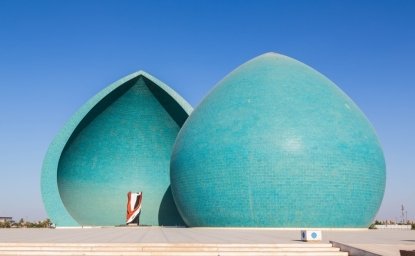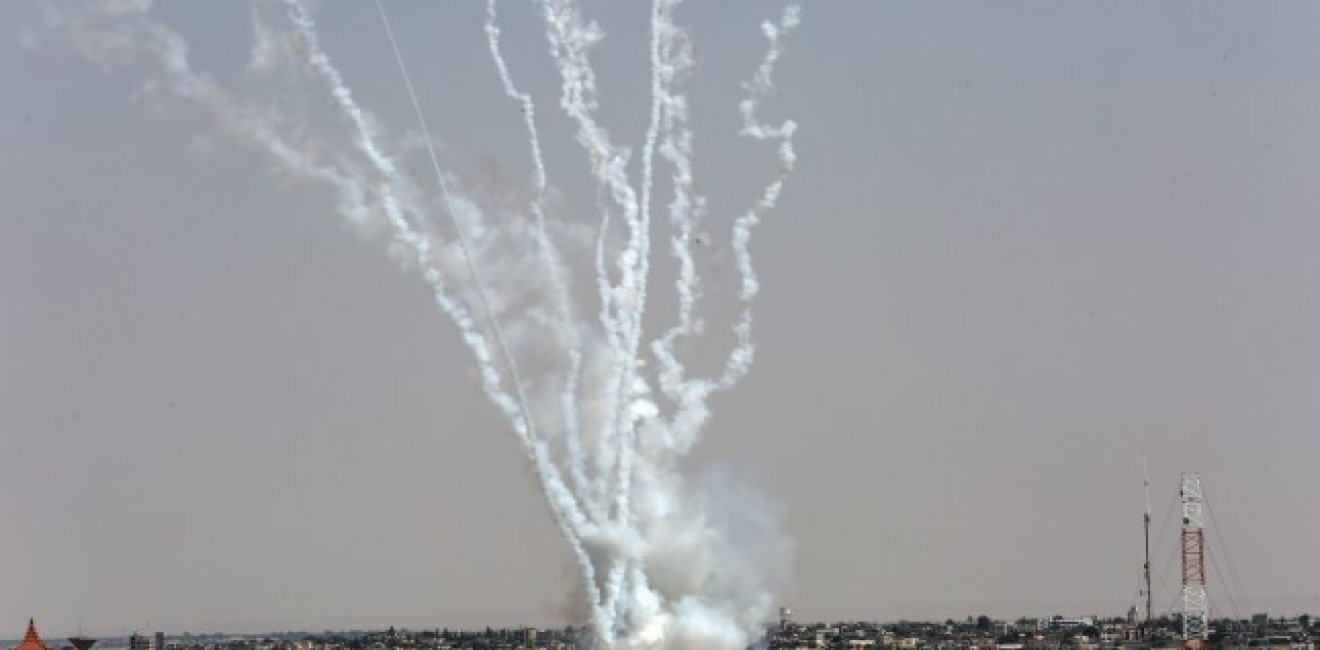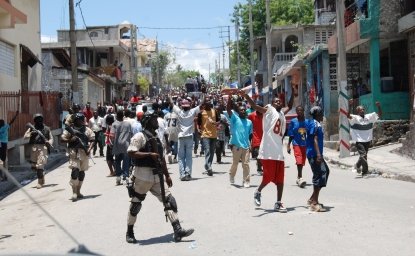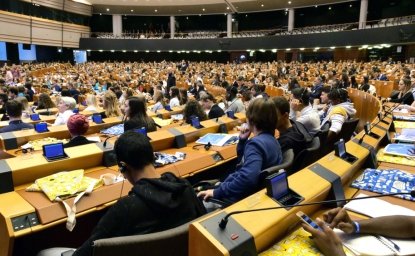This article originally appeared on New Security Beat.
I flew into Tel Aviv last Friday afternoon, primed for a week of meetings with Israeli and Palestinian environmentalists and officials. By sounding out these men and women in Jerusalem, the West Bank, and other parts of the region, I hoped to expand on past explorations of their transboundary cooperation, widely recognized as a model for environmental peacebuilding. Through an articulation of the successes that they––and their Jordanian peers–have had in bolstering water access, renewable energy, and environmental protection across their shared natural landscape, I was looking forward to telling a positive environmental conflict story—particularly one in a place that is often bereft of good news.
At about 8 a.m. the following day, I woke up in a friend’s apartment as Jerusalem’s web of streetside sirens crackled to life with warnings of incoming rockets from Gaza. For much of the rest of the morning, Israel’s Iron Dome interceptor system swatted most of them from the sky amid loud bangs and wisps of smoke from the detonations high above. At the same time, reports began to filter through of a massacre along the periphery of the blockaded Gaza Strip. More than 1,000 Israelis, the large majority civilians, were murdered by Hamas militants in that initial onslaught. Many hundreds of Palestinian militants and civilians in Hamas-controlled Gaza have been killed in Israeli airstrikes since then. Both tolls are likely to rise substantially.
Conflict dynamics can quickly subvert environmental peacebuilding ‘wins’
It goes without saying that my meetings were canceled. No one wants to discuss the environment and peace in these conditions, ones in which their efforts can seem both futile and wildly out of sync with realities on the ground. Even if they want to, many people are unable to meet. Israeli authorities quickly shut down the checkpoints that control access into and around the West Bank. Others still are unlikely to give a fair assessment of their generally pro-environmental cooperation views. “You don’t want to speak to me right now because I’ll tell you that this work is useless, even if I don’t necessarily believe that,” one longtime Palestinian environmentalist and peacebuilder told me.
The views expressed in this article are those of the authors and do not express the official position of the Wilson Center.
For those of us not party to the conflict but engaged in the regional environmental peacebuilding space, all of this is a grim reminder of something long understood but that I––and perhaps others––are inclined to forget: You cannot disconnect the environment and natural resources like water from a conflict’s wider dynamics, no matter how many ‘wins’ practitioners have previously amassed. You can build new wastewater treatment facilities in Palestinian towns to the benefit of their inhabitants and Jewish communities alike, but that does not negate the basic reality of an increasingly brutal Israeli occupation of the West Bank. You can develop ties between mayors on either side of the Jordan River to facilitate joint action on pollution, biodiversity preservation, and crop health, but that does little to stifle the viciousness of Hamas ideology.
For all the hope that Israeli environmentalists had in the 1990s that shared environmental initiatives might serve as a bridge to building trust and momentum in other fields, this latest—and seemingly tide-turning—flare up in hostilities is arguably yet another demonstration of the limitations of that model. As Gidon Bromberg, a director of the Israeli-Palestinian-Jordanian EcoPeace Middle East NGO, pointed out in a recent chat, his organization was conceived during a period when it was thought that the regional environment would need to be protected from the untrammeled development that a much anticipated peace was expected to bring. How improbable that all sounds now.
But conflict also demands environmental peacebuilding investments
But there is a big ‘but’ to this. Because while joint environmental and climate action can only go so far in building or maintaining peace, the Israeli-Palestinian conflict is also a powerful ongoing illustration of environmental peacebuilding’s necessity among countries so intimately intertwined. The cross-border nature of environmental impacts is unavoidable. The early contours of this renewed fighting attest to that. Two of Israel’s desalination plants, which collectively provide about 30% of the country’s drinking water, are within easy reach of rockets and in cities that have sustained heavy damage in the initial round of fighting. The country’s water security could take a significant hit if the fighting worsens. Indeed, it has been affected even in relative peacetime. One of those plants, at Ashkelon, has gone offline several times in recent years due to pollution from Gaza, an impact that EcoPeace first identified, and which helped to encourage expanded support for infrastructure improvements in the Gaza Strip. That pollution will almost certainly worsen over the coming days as Israel bombards Gaza in retaliation and severs the fuel deliveries needed to power its wastewater network.
Israeli environmentalists have also helped to roll out solar power across the Gaza Strip. They have done this above all to help a population that has weathered a suffocating Israeli-Egyptian blockade for almost two decades. But by reducing Palestinian dependence on noxious diesel-powered generators, they have also improved the air quality across parts of southern Israel. In a land so small that rockets reach Tel Aviv in seconds, there is no such thing as isolated environmental stress. Through their recognition of that fact, local environmentalists have secured meaningful improvements to all communities’ lives at a time when little to nothing has been achieved elsewhere.
Most importantly, the environmental field seemingly has delivered a past peace dividend––just one within more modest parameters than originally envisaged. By maintaining contact with one another even as other forms of trilateral Israeli-Palestinian-Jordanian engagement have withered in recent years, these advocates, many very well connected to their own governments, have ensured that dialogue has endured, even during the tensest moments. It is those longstanding relationships that enabled the likes of EcoPeace to conceive of ‘Project Prosperity,’ an already partially implemented project to forge healthy mutual water and renewable energy interdependencies between the three states and one that should act as a brake on at least some forms of violence. It is the tightness of those bonds that has allowed EcoPeace Middle East and actors such as the Arava Institute for Environmental Studies to quietly educate the next generation of transboundary environmentalists through at least half a dozen wars. As the climate crisis bears down on this intensely vulnerable, tightly populated landscape, it is the environmental peacebuilding community’s extensive work, much of it kept very quiet to avoid unhelpful or dangerous outside interference, that is helping the Jordan basin states to adapt.
For now, these Israelis, Palestinians, and Jordanians are battening down the hatches and waiting for better times. Given the scale and nature of this clash, that might take a good deal longer than usual. But when the violence eventually relents and communities begin to size up the environmental impacts of this war and the effects on communities, environmentalists’ efforts will be more important than ever.
The views expressed in this article are those of the authors and do not express the official position of the Wilson Center.
Author

Environmental Journalist

Middle East Program
The Wilson Center’s Middle East Program serves as a crucial resource for the policymaking community and beyond, providing analyses and research that helps inform US foreign policymaking, stimulates public debate, and expands knowledge about issues in the wider Middle East and North Africa (MENA) region. Read more


Environmental Change and Security Program
The Environmental Change and Security Program (ECSP) explores the connections between environmental change, health, and population dynamics and their links to conflict, human insecurity, and foreign policy. Read more

Explore More
Browse Insights & Analysis
Iraq Should Consider Extending UNAMI’s Mission



